28 F. average high on February 12.
10 F. high temperature on February 12, 2015.
February 13, 1872: A snowstorm buries Sibley County with 12 foot drifts. Many people perished in the storm.
February 13, 1866: What may be Minnesota's 'Greatest Blizzard.' It lasted for three days and buried barns in drifts. Luckily, it began at night when many people were at home.
February 13, 1838: In the days before Tower…at 2:00 am the mercury thermometer at Ft. Snelling freezes at 40 below. The actual temperature is unknown.
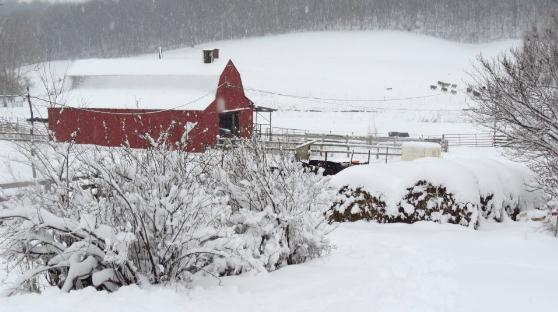
Obligatory Cold Front - Thaw Next Week - Fleeting Whiff of Spring Next Friday?
Comedian Carl Reiner finds snow to be "An unnecessary freezing of water." Sinclair Lewis said “Winter is not a season, it's an occupation.” A Canadian occupation, perhaps?
Now we squawk when the mercury dips below zero. Our parents had a lower threshold. -30F was a pretty big deal back in the 1970s. It seems our tolerance for the cold diminishes as background temperatures continue to rise.
The urban heat island (additional heat retained by concrete and asphalt) keeps the downtowns and close-in suburbs a few degrees "milder" this morning. Maybe -8F instead of -15F in the exurbs. The last subzero morning of winter? I'm starting to wonder.
The approach of milder air, coupled with a twist of cold air aloft sparks a couple inches of powder Sunday; heaviest bands set up over southwestern Minnesota, where this should be plowable.
The big story is a hint of spring next week: freezing by Monday - I wouldn't be shocked to see 40s next Friday. We'll see more cold fronts (no kidding, Paul) but the odds of subzero drop off rapidly in March.
Winter isn't nearly done with us yet but go ahead and dream of spring break.
* Photo credit: Marlo Lundy.
"I was traveling north to Duluth on 35W for a 1:00 hearing. As I went pass Sandstone, I noticed a larger amount of snow on the ground. No big deal.
I passed another car and was in the left lane, going 70-72 miles per hour. I came over a short rise and there was a patch of ice. At once, my two left tires were on ice, and the right tires were on dry pavement. The car pulled left, I counter steered right, and the car instantly fishtailed and went into the ditch left. The car flipped once and slammed into a tree. I walked away from it. Pretty amazing.
The plows didn’t catch that piece of ice, and I didn’t see it until I was in it. It all happened in a few seconds.
I forgot to tell you the surreal experience of the centrifugal force of the car flipping, with a full sleeve of musky lures and box of shotgun shells floating around me-from the back of the car, to the front.
I am very fortunate to be here with a few bumps and bruises.
This is just like the Subaru commercials where they say “they lived”. That’s me..."


More Rain, Less Snow for U.S. Winters. Here's an excerpt of an interesting analysis at Climate Central: "...As the world warms, it’s changing the essence of winter. It’s not that less precipitation is falling (though that is happening in some areas). It’s that less winter precipitation is falling as snow, according to a new Climate Central analysis. Not all winter precipitation is created equal. Less winter precipitation falling as snow is bad news for water supplies and wildfires out West and the financial fate of ski resorts across the country. To see how winter precipitation is changing, we looked at states that all see notable amounts of snow (sorry, Florida). Our analysis included 2,121 weather stations and looked at days with precipitation from the months that typically see at least 1 inch of snow so we could get a full sense of not just winter, but the snowy shoulder seasons as well..."
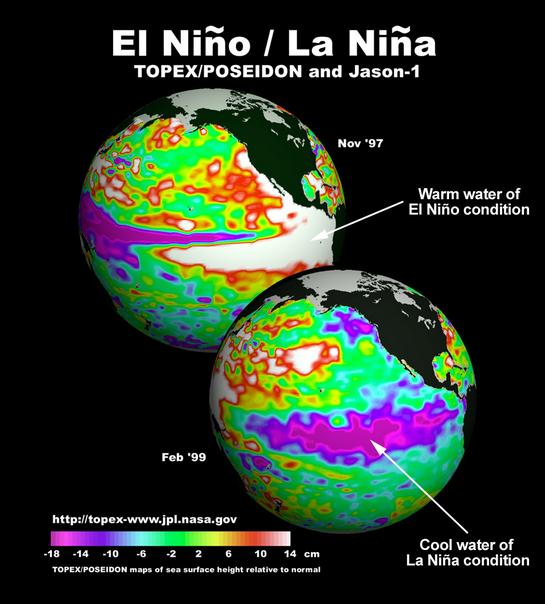
The Weather Channel has more perspective on the possible flip from El Nino to La Nina here.
We May Have Just Seen a Truly Ominous New Weather Record. Hurricanes get their fuel from warm ocean water. The warmer (and deeper) the water, the greater the potential for intensification. In theory warming waters should fuel more extreme hurricanes. Are we starting to see this in the data? Here's a clip from The Washington Post: "...That’s what makes it so striking to find Jeff Masters, a hurricane expert and co-founder of the Weather Underground, declaring that late October’s Category 5 Hurricane Patricia wasn’t just the strongest hurricane ever seen in the Western hemisphere. No, Masters asserts that Patricia was the strongest tropical cyclone ever reliably recorded by humans, at least when measured by its wind speeds. (Tropical cyclones go by various names, including hurricanes and typhoons, in different parts of the world). “I regard Patricia as unmatched for the strongest winds of any tropical cyclone in recorded history,” Masters wrote on Monday..."
Image credit: "A handout satellite image made at 10:45 am ET and released by the US National Oceanic and Atmospheric Administration (NOAA) on 23 Oct. 2015 shows Hurricane Patricia (L) as it approaches the coastline of Mexico from the Eastern Pacific." EPA/NOAA.

File photo: USGS.
21st Century U.S. "Dust Bowl" Risk Assessed. Could it happen again? Land use practices have improved dramatically since the 1930s, but if California's epic, 4-year drought had set up over the Great Plains instead? Will Iowa become the Cotton State? Here's an excerpt from The BBC: "...A repeat of 1930s weather today would lead to a 40% loss in maize production. In a 2-degree warmer world, it becomes a 65% reduction, the team projects. "The 1930s were really extreme and, yes, the chances of the same precipitation distribution happening again are small," explained Joshua Elliott, from the University of Chicago's Computation Institute. "But the temperature distribution wasn't any more extreme than we've seen in 2012 or 1998, for example..." (File photo: PBS and Ken Burns).
The Current El Nino May Hold Lessons for How To Deal With a Warming Planet. This El Nino may exceed 1997-98 for the largest, most intense ever recorded. Here's an excerpt from PRI, Public Radio International: "...In some sense, what we're seeing around the world right now is an advanced view of the sort of things that we'll see more of in the future — all of the weather systems being somewhat more vigorous than they have been in the past, the risk of both droughts in some regions and flooding in other regions,” says climate scientist Kevin Trenberth of the National Center for Atmospheric Research. El Niño is essentially a “mini global warming" event, Trenberth explains. It arises from a build-up of heat in the waters of the equatorial Pacific Ocean. The warm ocean waters and higher sea levels begin in the western tropical Pacific and then spread to the central and eastern Pacific..." (Image credit: NOAA).
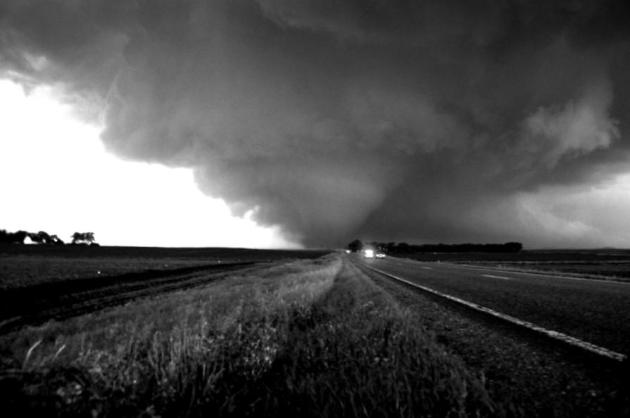
June 16, 2010 Albert Lea tornado photo courtesy of meteorologist Aaron Shaffer, founder of MinnyApple.com.
Study: Downpours Over Land Have Slowed Sea Level Rise. The hydrological cycle is on "fast-forward", harder rains - faster rates of evaporation, but what are the implications for sea level? This story is a bit counterintuitive, but it's a good read, focused on emerging research at Climate Central: "...The land “has been taking up water,” said NASA Jet Propulsion Laboratory scientist John Reager, who led the study published Thursday in Science. “That’s been slowing the rate of sea level rise.” The effect may have been temporary, and it has not been enough to protect coastal residents from profound shoreline changes triggered by global warming. The new study relied on NASA gravity data from 2002 to 2014 to track the changes in the amount of water stored on land. The finding excluded water stored in glaciers, which continued to decline as warming temperatures caused them to melt..."
Photo credit above: "Storms can transfer water from the oceans to the land." Credit: Shannon Dizmang/Flickr.
Photo credit above: "A traffic policeman wears a mask to protect himself from dust and air pollution as he signals to drivers in New Delhi, December 23, 2015." Reuters/Adnan Abidi/Files.
Photo credit above: "A worker cleaning equipment used to process recycling material at the Waste Management facility in Newark." Credit Dave Sanders for The New York Times.
Game Change: Tesla and GM Announce Affordable, Long-Range Electric Cars. I'm pretty excited about the Bolt from GM and Tesla's forthcoming Model 3. Our kids and grandkids won't think twice about buying (or borrowing) an electric car. Here's an excerpt at ThinkProgress: "Two of the world’s leading electric vehicle (EV) producers say that they will soon deliver 200+ mile range EVs at a game-changing price of $30,000 or less — including tax incentives. Until now, EVs have not been considered a mass-market consumer vehicle in the United States for two key reasons — high price and low range. But with battery prices continuing their unexpectedly rapid price drop, both General Motors and Tesla have announced that they can address both of those problems simultaneously in the near future. For GM, it will be the Chevy Bolt, and for Tesla, the Model 3..."
Photo credit above: Carolyn Kaster, AP.
A National Power Grid: The Answer to Renewable Energy's Storage Problem? Co.Exist has the story; here's a clip: "Wind power is now as cheap as coal, and in some places, solar is cheaper than natural gas. But there's one thing that most people assume still holds back renewable energy in the U.S.: power plants need a constant source of energy, and there isn't a cheap enough way to store wind or solar at a large scale yet. But a new study suggests we don't actually need to store that power. Instead—because the wind is always blowing somewhere in the U.S., and a cloudy day in one city will be sunny elsewhere—researchers suggest we just need a bigger grid, and better power lines that could send energy wherever it's needed..."
Photo credit above: "The wind is always blowing somewhere." Andrei Mayatnik via Shutterstock.
Illustration credit above: "No place is the problem clearer than in Florida, where the Sunshine State's vast solar potential has gone to waste." Illustration by Victor Juhasz.
Illustration credit: "Perception is key to resilience: Do you conceptualize an event as traumatic, or as a chance to learn and grow?" Credit Illustration by Gizem Vural.
How The "Dirt Cure" Can Make for Healthier Families. Here's an excerpt of a fascinating story at The New York Times: "Dr.
Maya Shetreat-Klein has a message for the parents of small children:
Don’t be afraid of dirt. She is a firm believer in the idea that
children in Westernized countries today grow up in a world that can be
too sanitized. They spend less time outdoors exploring nature and more
time in front of screens than they did two decades ago. They eat foods
that are heavily processed. Many do not know what it’s like to taste
fresh, seasonally grown foods plucked from a garden with nutrient-rich
soil..."
Photo credit here.
Exact Replica of the Titanic Will Set Sail in 2018, With Better Hull. What can possibly go wrong? The full story at The Star Tribune.
Photo credit: "$30 of coffee." Photo: Caleb Pershan/SFist.
"Thank You Jerry Stiller..." Thank you Barry ZeVan (the Weatherman) who encouraged me to move to Minnesota back in 1982. I owe you a debt of gratitude for that recommendation. Barry (or BZ as I call him) recently wrote a book about his experiences with some notable notables, including a long list of famous Minnesotans. One of them is Walter Mondale, who wrote the following blurb on the back of his new book:
"Barry ZeVan, the Weatherman, is the person we watched as a television personality with personality. His autobiography tells us there was far more to his life in addition to television weather forecasts and broadcasting.His life story is a compelling read with constant surprises on almost every page. I heartily recommend it to anyone who thinks they know about survival."
- Walter F. Mondale, former U.S. Vice President, Ambassador to Japan and United States Senator.
Barry's book is introductorily titled "Thank You, Jerry Stiller....for Urging Me To Write This Book" (with Jerry's written permission to Barry and really the reason Barry decided to write the book). The main title is "Barry ZeVan: My Life Among The Giants, A Memoir". It's available today on Amazon. Alternate site link to the book is, direct to the book page, goo.gl/wBF8PM. If you're a fan of Minnesota weather, celebrities and great, poignant, heart-warming story-telling you will love this book!

TODAY: Cold start. Fading sun. Winds: S 5-10. High: 9
SATURDAY NIGHT: Clouds increase, flurries late. Low: 0
SUNDAY: Couple inches of snow, slick roads. Winds: SE 10-20. High: 21
MONDAY: Some sun, risk of a thaw. Wake-up: 18. High: 32
TUESDAY: Next clipper, coating of flakes? Wake-up: 23. High: 29
WEDNESDAY: More clouds than sun, cooler. Wake-up: 14. High: 25
THURSDAY: Overcast, windy and milder. Winds: SE 15-25. Wake-up: 21. High: 36
FRIDAY: Vague hints of spring. Rain shower? Winds: S 10-15. Wake-up: 33. High: 43
Climate Stories...
Photo credit: "Shot at the same place as the above photo from the 1994 expedition, this 2007 photo clearly shows open water where there should be close and dangerous pack ice." Photograph: David Thoreson
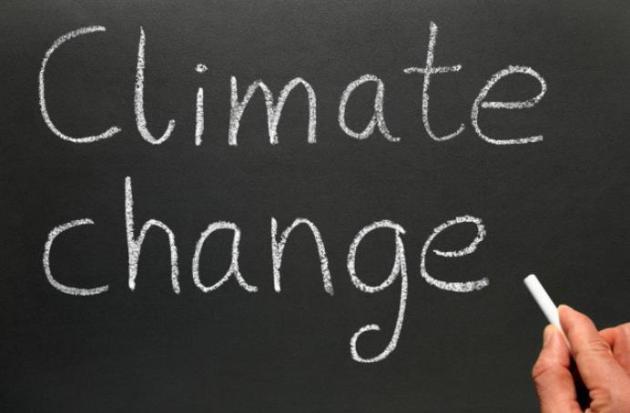
* The report at Science is here.
** More perspective at Scientific American.
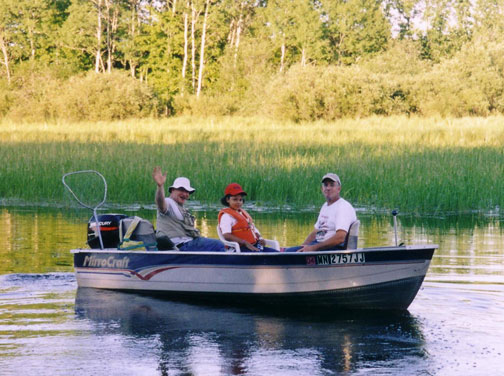
- "Walleye are a coolwater fish (our state fish of course), and their habitat is warming such that black bass are expanding (smallmouth and Largemouth Bass) their range northward. More accurately, where they occur with Walleye, warming water favors black bass. There is evidence that if we continue on the path we’re going walleye might decline simply because they are physiologically better suited to cooler water. A prey species important to walleye (and other top predators) and one that has even cooler habitat requirements is the Cisco. They are currently declining in Minnesota, especially along the southern edge of their range which is central Minnesota.
- As you’re probably aware, Minnesota is considered a transitional zone state, whereby the southern prairie meets the central hardwood forest which in turn gives way to the northern boreal forest …..this of course is a southwest to northeast progression. As things are playing out now with the climate, we stand to lose the awesome pines and firs that are so beloved by 99-percent of us. Think of the Boundary Waters and Voyageur’s National Park as a landscape of brush, grass and oak/maple woods instead of the fragrant balsams and towering pines we’re used to. The thought of my grandchildren losing this saddens me. Under the current scenario, they’ll have to drive to Ontario in 2100 to experience the woods we take for granted. I was born and raised here and to me, our lakes and pines and our cold weather make us who we are – a proud northern people."
- Al Schmidt, Fisheries Specialist, Minnesota DNR.
.jpg)
The Supreme Court Can't Halt a Cleaner Energy Future For Our Children. I'm writing a book, "Caring for Creation" with the author of this Op-Ed at PennLive.com. Mitch Hescox is a minister, he leads EEN, The Evangelical Environmental Network (I am on the board), self-identified as conservative and Republican. Mitch is also the son of a coal miner, so he has a very interesting story to tell. Here's an excerpt: "...What we're fighting for is what our nation's founders proclaimed in Philadelphia in 1776: life, liberty, and the pursuit of happiness. We want their lives liberated from pollution so they can be healthier and happier as they create their own futures. Unfortunately, reaching those goals has been made difficult by fouled air and dirty water that impacts both our unborn and born babies. As pro-life evangelicals, we have a special concern for the unborn. We want children to be born healthy and unhindered by pollution that impacts them even before they take their first breath. The medical community has long known of the environmental impacts on our unborn children..."
Photo credit above: "Tamires da Costa, 16, who is four months pregnant, stands in a street with standing flood water next to her home in the Parque Sao Bento shantytown of Rio de Janeiro, Brazil on 29 January 2016." Photograph: Leo Correa/AP.
Image credit above: "This NASA animation shows Greenland's ice mass loss from January 2004 to June 2014." (NASA)
Can Only Congress Prevent Climate Change? If you live (or govern) in south Florida climate change isn't an abstraction; rising seas are already taking a toll. Here's an excerpt at Bloomberg Business: "...The new Climate Solutions Caucus differs from most other House groups in that its co-founders, Representatives Carlos Curbelo and Ted Deutch, are from different parties. And they want to keep it bipartisan, with an even number of Rs and Ds. It's probably not a coincidence that Curbelo, a Republican from Florida's 26th congressional district, and Deutch, a Democrat from the 21st district, represent people witnessing climate change in its starkest terms: Their communities, in Miami and surrounding counties, are slowly slipping into the sea..." (Miami Beach photo credit: Trip Advisor)
What These Christians Are Giving Up For Lent: Fossil Fuels. Here's a clip from The Washington Post: "A new initiative in the United Kingdom is not only calling for Christian communities to band together in support of clean energy, but actually helping them get their own electricity that way. The Big Church Switch, which launched Wednesday, aims to inspire both individuals and churches to make the switch to renewable energy sources — and they’re already gaining support from church leaders in the country..."
Photo credit above: "Solar panels sit in an array at the Southwick Estate Solar Farm, operated by Primrose Solar Ltd., near Fareham, U.K., on Friday, Oct. 2, 2015. The plant, situated in 200 acres (81 hectares) of farmland, consists of 175,000 monocrystalline PV modules and has a capacity of 48 megawatts." Photographer: Simon Dawson/Bloomberg
The Supreme Court Could Block Obama's Climate Plans - But It Can't Stop Clean Energy. Here's an excerpt of a Chris Mooney article at The Washington Post: "...However, there’s another side of the story. The fact of the matter is that the Clean Power Plan wasn’t set to fully kick in until 2022 — and in the interim, the U.S. has been going through something that looks a lot like the kind of transition it is meant to prompt even without the plan in place. Namely: The nation has been slowly decarbonizing its electricity system, through the growth of renewables and the switching from burning coal to burning natural gas..."
Photo credit above: "Supreme Court Justice Elena Kagan, from left, Chief Justice John Roberts, Justice Anthony Kennedy, Justice Ruth Bader Ginsburg, Justice Stephen Breyer, and Justice Sonia Sotomayor arrive before President Barack Obama delivers the State of the Union address to a joint session of Congress on Capitol Hill in Washington, Tuesday, Jan. 12, 2016." (AP Photo/Evan Vucci).
Thank you for sharing Curt Roeder's story. We bought a new Subaru at the end of December. One of the main reasons that we did was because of stories like his.
ReplyDeleteI also want to thank you, once again, for continuing this blog. I have learned so much about the weather & climate.
Thank you and best wishes to you, Paul! S.T. Pine Island, Mn.